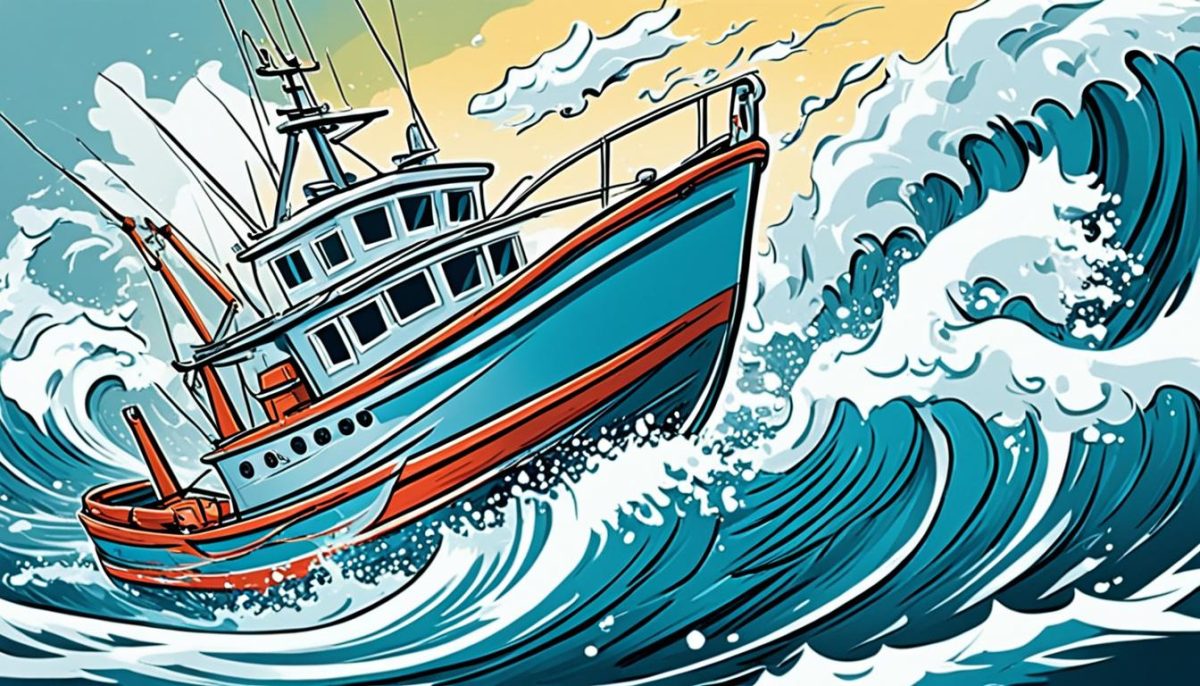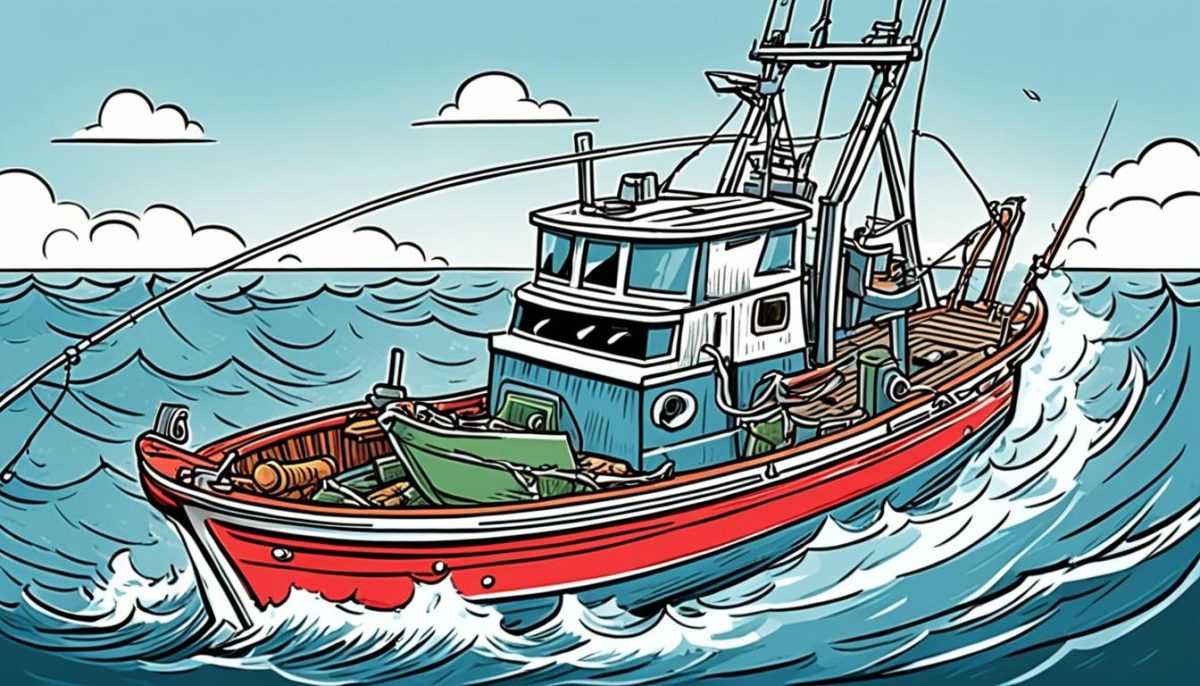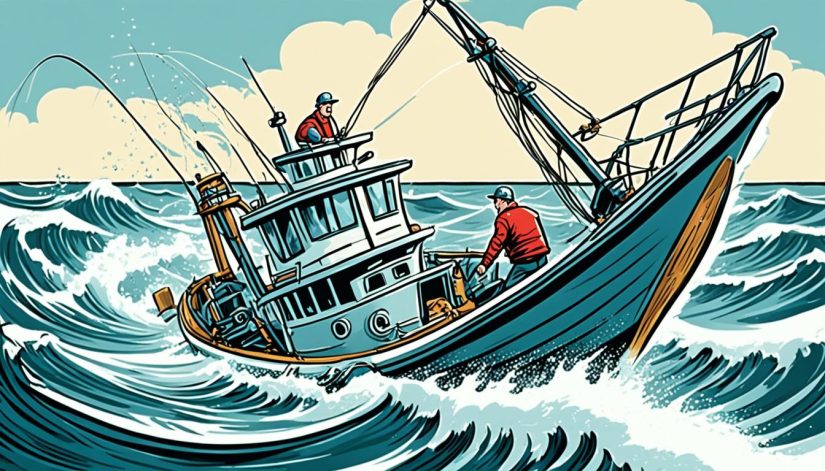As anglers and boaters, we must always prioritize safety on the water. One critical aspect of this is understanding the potential risks associated with anchoring a fishing boat from the stern. In this article, we’ll explore the major danger of this anchoring method and provide best practices for safe and effective boat anchoring.
Anchoring a fishing boat from the stern can pose significant risks to the vessel’s stability and safety. By understanding these dangers, we can make informed decisions and ensure a secure and enjoyable time on the water.
Understanding the Risks of Stern Anchoring
Anchoring a fishing boat from the stern can pose serious risks that every boater should be aware of. The potential for boat swamping and capsizing, as well as the adverse effects on the boat’s trim and stability, are crucial factors to consider when selecting an anchoring method.
Potential for Swamping and Capsizing
When a fishing boat is anchored from the stern, the weight of the anchor and rode (the line connecting the anchor to the boat) can cause the bow to rise. This reduced stability makes the boat more susceptible to being swamped by waves or wind, increasing the risk of capsizing and potentially leading to disastrous consequences. Boaters must be vigilant in monitoring weather conditions and the boat’s response to the anchoring setup to ensure their safety.
Adverse Effects on Boat Trim and Stability
Stern anchoring can also have a detrimental impact on the boat’s trim and overall stability. As the bow rises, the boat’s balance and handling characteristics can become compromised, making it more difficult to control and maneuver. This can increase the likelihood of accidents and dangerous situations, especially in changing weather or water conditions.
To mitigate these stern anchoring risks, boaters should carefully consider alternative anchoring methods, such as anchoring from the bow or using a combination of bow and stern anchors. By understanding the potential hazards and taking appropriate precautions, anglers can enjoy their time on the water while prioritizing their safety and the safety of their vessel.

“Proper anchoring is crucial for the safety and stability of any fishing boat. Ignoring the potential risks of stern anchoring can have devastating consequences.”
The Major Danger Of Anchoring A Fishing Boat From The Stern
As avid boaters and anglers, we understand the importance of proper anchoring techniques to ensure the safety and stability of our fishing vessels. However, one practice that poses a significant threat is anchoring a fishing boat from the stern. This dangerous approach can have dire consequences for the boat’s stability and the well-being of its crew.
The primary danger of stern anchoring lies in the way it alters the boat’s weight distribution. When a fishing boat is anchored from the stern, the weight of the anchor and the force of the water’s current pull the back of the vessel down, causing the bow to rise. This shift in trim can make the boat more susceptible to swamping, where waves or sudden changes in water conditions can fill the boat with water, leading to potential capsizing.

Furthermore, the destabilized trim can also adversely affect the boat’s maneuverability and control. With the bow elevated, the steering and handling of the vessel become more challenging, increasing the risk of collisions, groundings, or other dangerous situations. This can be particularly problematic in rough waters, where quick and precise maneuvering is crucial for navigating safely.
“Anchoring a fishing boat from the stern is akin to playing with fire – the risks are simply not worth it. Prioritizing the safety and stability of our vessels should be the top concern for all boaters and anglers.”
To mitigate these major dangers, it is essential for boaters and anglers to understand the importance of proper anchoring techniques. By anchoring from the bow, we can maintain the optimal weight distribution and ensure our fishing boats remain stable and responsive, even in challenging weather and water conditions. Prioritizing boating safety should always be the top priority for those who love the thrill of fishing on the open water.
Best Practices for Safe Anchoring
To avoid the major dangers of stern anchoring, we must follow best practices for safe and effective boat anchoring. This includes anchoring from the bow, using an appropriately-sized anchor and rode, and ensuring the anchor is properly set. By adhering to these best practices, we can minimize the risks associated with anchoring a fishing boat and enjoy our time on the water with peace of mind.
Regular inspection and maintenance of our anchoring system is also crucial. Regularly checking for wear and tear on the anchor, rode, and other components can help us identify and address any issues before they become a problem. Additionally, being aware of changing weather and water conditions can help us make informed decisions about when and how to anchor our boats.
Implementing proper anchoring techniques and prioritizing boating safety is essential for ensuring a smooth and enjoyable experience on the water. By following these best practices, we can work towards our goal of safe boat anchoring and create lasting memories with our loved ones.

